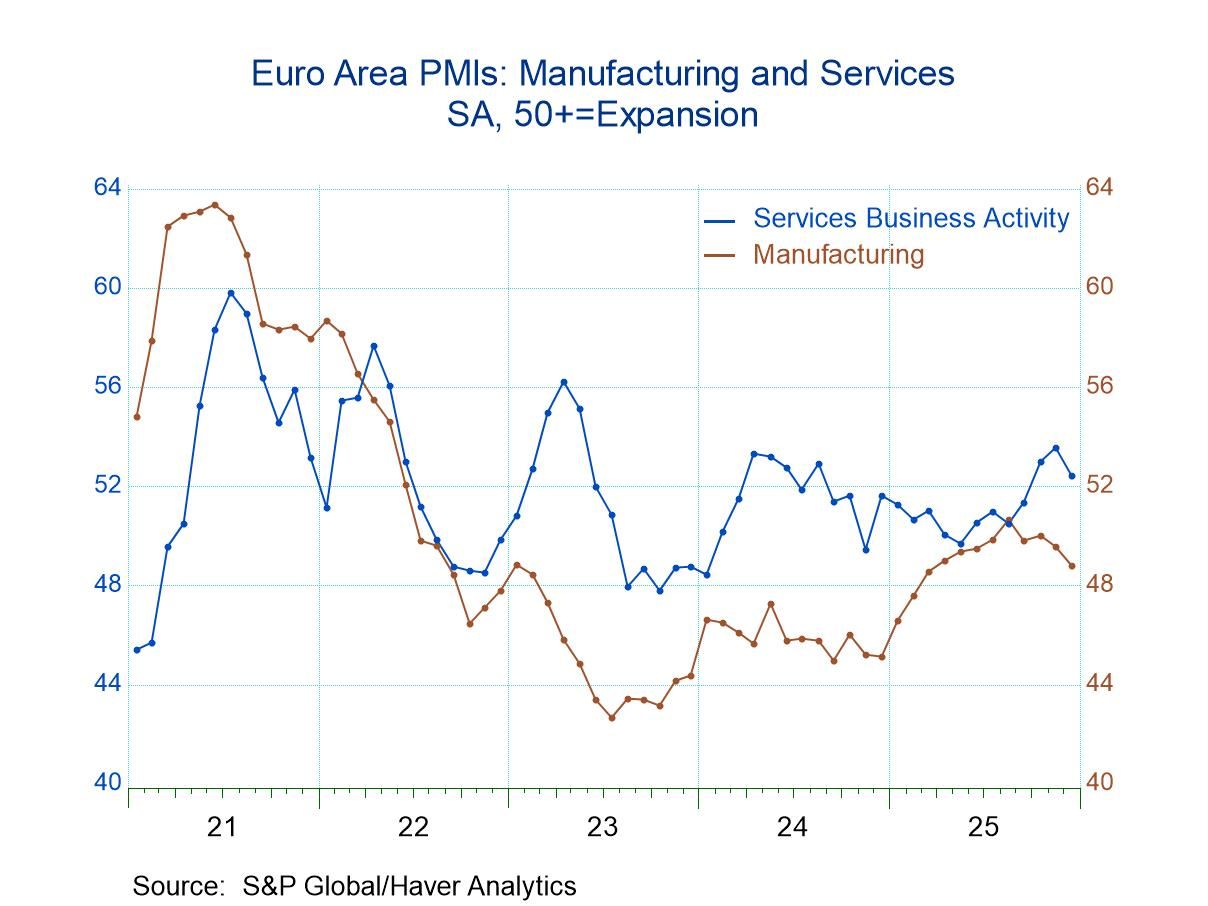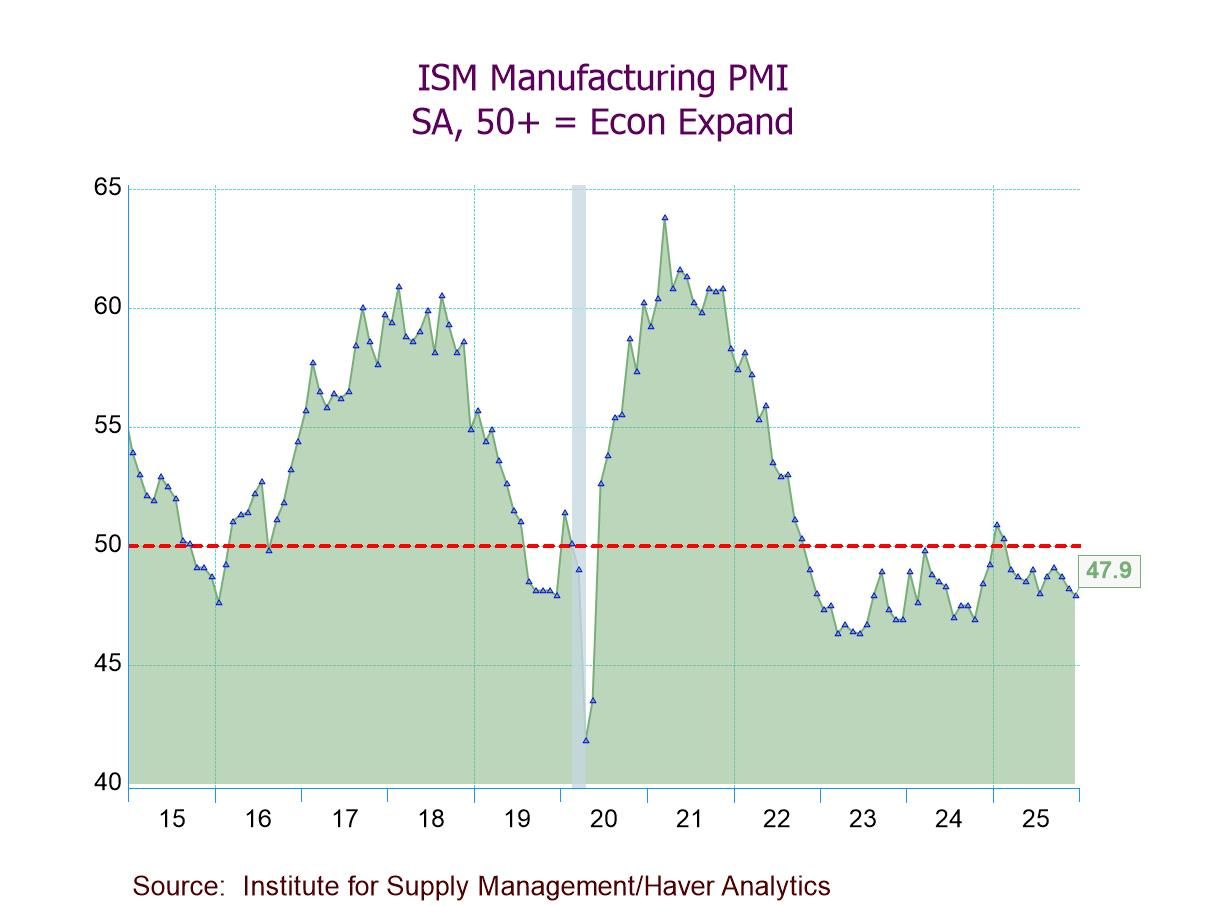Japan’s Production Struggles to Make and Keep Gains

In the graph that accompanies this article, I have chosen to plot industrial production as a level instead of as a growth rate- the latter treatment would be more common. The reason for it, as you can see, is that industrial production has been without a positive trend for some time. The prevailing trend over a longer period (back to 2021 or further depending on how you construct a trend) is clearly negative although the short-term trend shows a very clear revival in progress from early this year.
These complications make growth rates less useful to calculate because production has contrary long-term and short-term trends, and its path is peppered with a good deal of volatility which increases the chance that any growth rate you calculate is not very meaningful.
Having said that, I also included table that calculates growth rates! Seeing the chart and plotting industrial production as a level together allows us to understand what's going on with the growth rates a little bit better.
Industrial production declines over 12 months and over six months but then makes a very strong recovery over three months for both total IP and for manufacturing. Total industrial production is rising at a 19.3% compounded annual rate over three months while manufacturing output rises at a 28.5% annual rate over three months. However, both show that output falls by 0.4% over 12 months, and for the year before that both headline industrial production and manufacturing rose on 12-month growth rates of 2.2% and 5.3%, respectively.
Looking at manufacturing sectors for consumer goods, intermediate goods, and investment goods, we have all three sectors showing output advancing in May, falling in April, and advancing in March. The recent months have been volatile. Looking at growth rates over 12 months, six months and three months, all the sectors have slightly different growth characteristics. Consumer goods output declines over 12 months and six months but grows strongly over three months. Intermediate goods output rises over 12 months, falls over six months, and then rises strongly over three months. Investment goods output declines over 12 months, grows at nearly a 4% pace over six months, and then explodes at a nearly 50% annual rate over three months. The output of investment goods is the only sector that shows persistent acceleration.
Moving out of manufacturing to mining and electric utilities & gas, we find that mining shows declines over 12 months and six months, with a nearly 10% annual rate increase logged over three months. Electricity & gas show that persistent acceleration from minus 0.2% growth over 12 months, to nearly identical ‘zero growth rate’ over six months and to a nearly 10% annual rate of growth over three months.
Despite the turbulence and the inconsistency across different timelines and in comparing timelines across different sectors, the one constant here is that over three months Japan's output is doing quite well no matter what sector you look at. Despite that, it's still true that, for the most part, industry shows increases in March, versus declines in April, topped by increases in May. It isn't exactly like Japan is now on this steady recovering platform; it's just that the data line up this way and because of that it doesn't give us any confidence that even with the strong trend over three months that it's going to have staying power.
Still, in the quarter-to-date the annual rate increase of overall industrial production manufacturing and all the sectors is impressively and consistently large.
However, as the chart at the top reminds us Japan has been in a period of relatively difficult growth. If we look at the level of output now calculating the percent change in output from where it was in January 2020, we are looking at a period slightly in excessive of four-years. And yet overall and manufacturing output both are lower, the output of intermediate goods is lower, consumer goods output is flat, and only investment goods output is up by 3.1% over that four-year span. Mining output is down, and the output of electric and gas utilities is lower on balance as well.

Japan has been through a very difficult period. For now, there's evidence of a substantial rebound in manufacturing, but because of the way it's occurring – jaggedly across recent months- it's hard to say we can have a great deal of confidence in it. The weakness in the yen, however, may provide some staying power to Japan's industry because the continuing weakness increases Japan’s competitiveness and that should enhance its ability to increase production at home even if domestic consumption will remain weak - that's the silver lining in this cloud. But, for now, the industrial Production report is irregular and the ray of sunshine from it shows through strongly over the last three months; it may or may not have staying power, and that's going to be something to watch in the coming months.
Robert Brusca
AuthorMore in Author Profile »Robert A. Brusca is Chief Economist of Fact and Opinion Economics, a consulting firm he founded in Manhattan. He has been an economist on Wall Street for over 25 years. He has visited central banking and large institutional clients in over 30 countries in his career as an economist. Mr. Brusca was a Divisional Research Chief at the Federal Reserve Bank of NY (Chief of the International Financial markets Division), a Fed Watcher at Irving Trust and Chief Economist at Nikko Securities International. He is widely quoted and appears in various media. Mr. Brusca holds an MA and Ph.D. in economics from Michigan State University and a BA in Economics from the University of Michigan. His research pursues his strong interests in non aligned policy economics as well as international economics. FAO Economics’ research targets investors to assist them in making better investment decisions in stocks, bonds and in a variety of international assets. The company does not manage money and has no conflicts in giving economic advice.




 Global
Global

